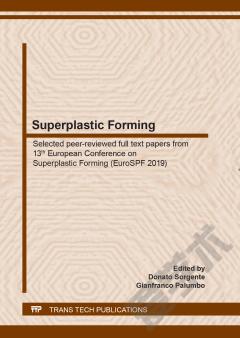Superplastic Forming
The occurrence of superplastic flow in metals has a long history but it is only over the last three or four decades that it was recognized that this process provides an opportunity for fabricating complex parts, especially curved panels, that may be used in a wide range of industrial applications. In practice, this use is dependent upon the high strain rate sensitivity of ~0.5 which is an inherent feature of true superplastic flow but in practice excellent forming may be achieved also through the use of metals deforming within the range of dislocation glide where the strain rate sensitivity is close to 0.3. New possibilities have arisen over the last two decades with the demonstrations that exceptionally refined microstructures, usually within the submicrometer or even the nanometer range, may be prepared from a wide range of commercial alloys through the application of severe plastic deformation in which the material is subjected to a very high strain without any significant changes in the overall dimensions of the sample. This presentation examines these historical developments and describes the new processing procedures that provide new opportunities within the field of superplastic forming.
{{comment.content}}








 京公网安备 11010802027623号
京公网安备 11010802027623号